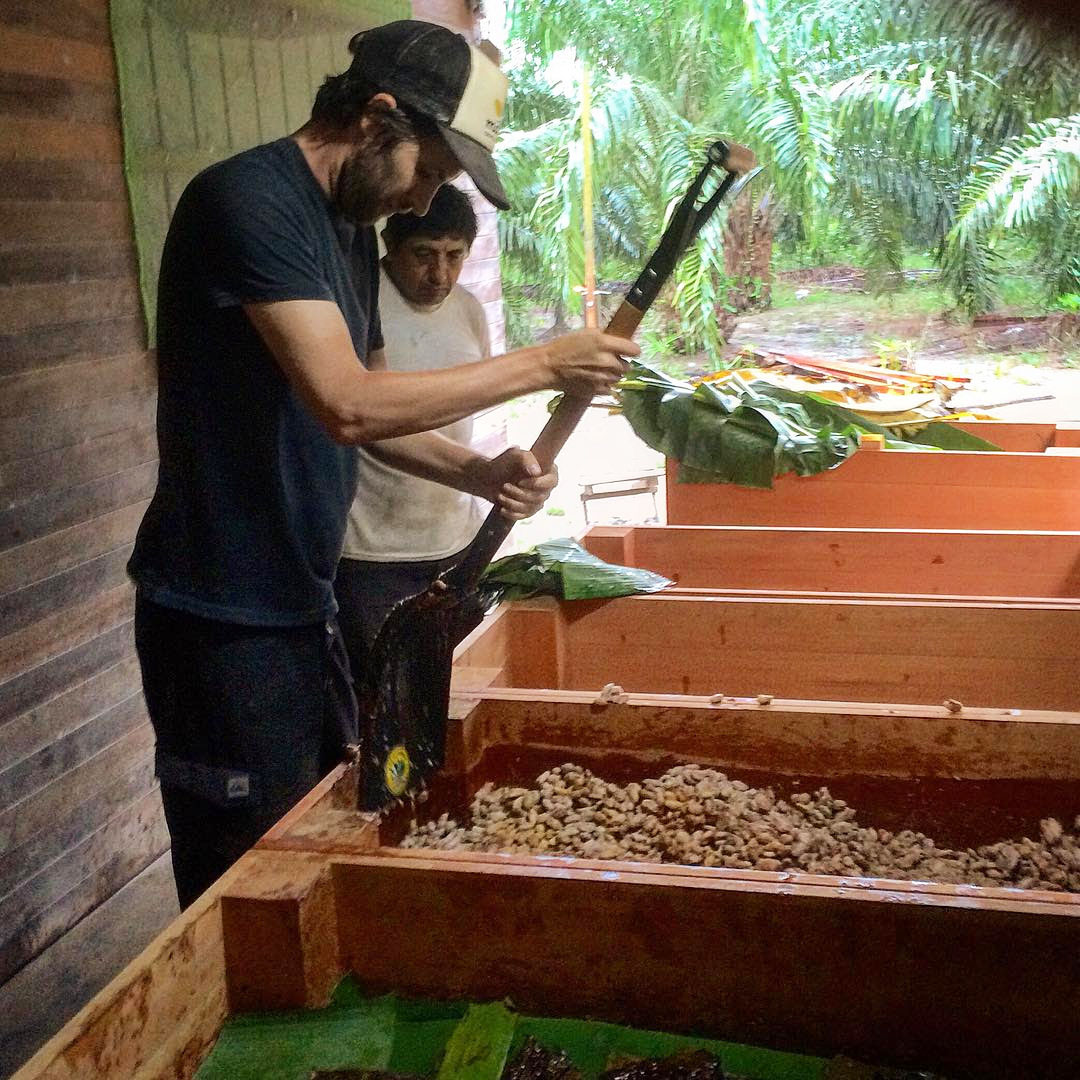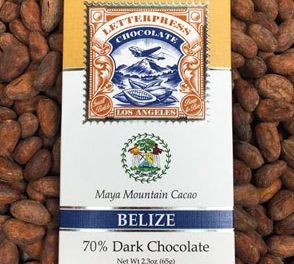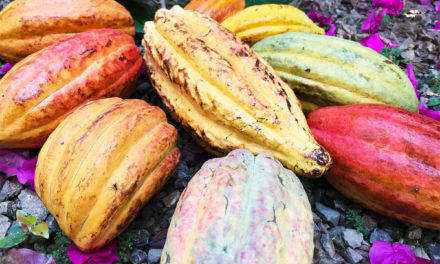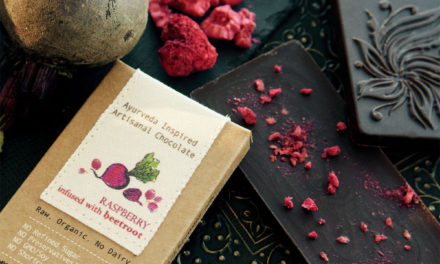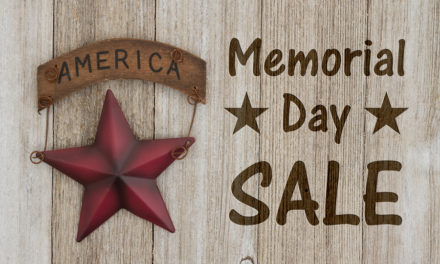I am so very, very excited to introduce you to the new Ucayali Bar From LetterPress Chocolates in Los Angeles. If you’re an avid Chocolate Connoisseur reader, you’re already well aware of LetterPress and David Menkes, but his obsessive work with chocolate has reached a whole new level with the Ucayali Bar. Not only does Ucayali receive this special write up here in May, it’s also our next exclusive chocolate offer.
Enjoy this behind the scenes look at the Ucayali Bar from David Menkes, and I’ll finish off the second half of the article with more on the cacao itself, and what makes these beans pack the elite chocolate punch they do.
— Eric Battersby
— May’s Free Content: our full Inside Chocolate article on LetterPress Chocolate’s new Ucayali Bar —
Ucayali Dawn
by David Menkes
It all began back in 2015 when we were still working out of our tiny apartment in Los Angeles. Dan O’Doherty of Cacao Services was working with some different cacao regions, and he sent us a few samples of different cacao. Our job was to process that cacao into chocolate bars and send samples back to him in Hawaii, hoping at least one of the varieties would be a winner. Per usual with samples from Dan, the ferments were all impeccable, but the flavor profiles proved hit or miss. Little did we know what a big “hit” we were about to have on our hands as we moved to the Ucayali sample.
As we prepared the Ucayali, we noticed how incredibly clean and even the beans were. Then we started roasting. Oh my. Aromas of star anise, cinnamon, and fennel filled the air of our entire apartment… scents we’d never even smelled from any cocoa beans. We pulled the beans out of the oven and cracked a few open for tasting… my wife Corey looked at me and said “buy as much of this as you possibly can!”
Quantity Constraints
The problem, however, was that Dan fermented only a micro lot of beans, and at the time we could only acquire a small amount. That problem intensified when we premiered Ucayali in Seattle during our Craft Chocolate Week event, and we sold out all our bars in less than a month!
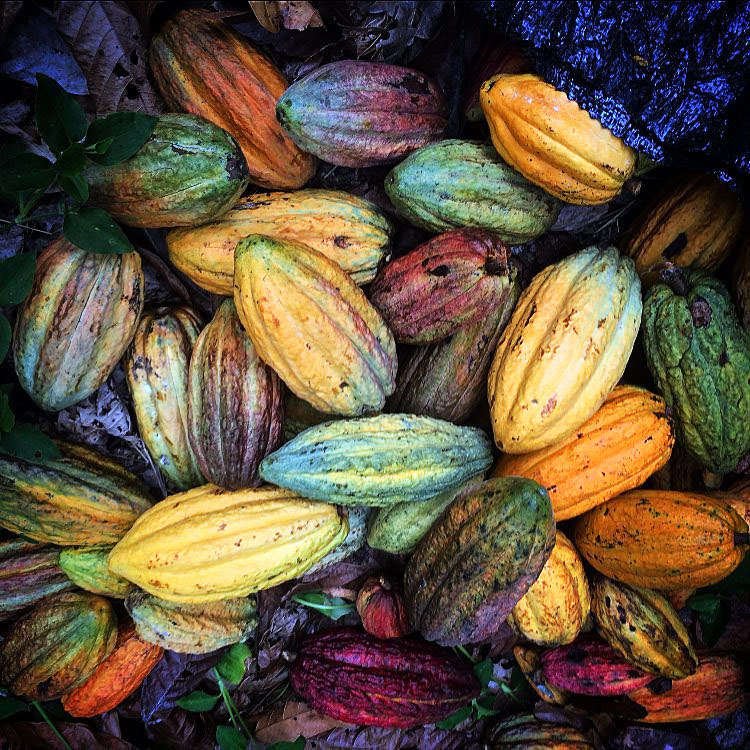
Cacao Pods From Ucayali
People kept emailing us asking when they could get more Ucayali bars, and unfortunately we had to say we honestly didn’t know, because shipments of this stellar cacao were sporadic at best. We anticipated a shipment sometime in the summer of 2016, but due to various logistics issues, the bags didn’t arrive until almost February 2017!
EDITOR’S NOTE: As we covered in the March 2017 issue, the Ucayali area of Peru faces the same difficulties with growing coca (cocaine) vs. cacao as Colombia does. It can affect shipments at times, and it also means that chocolate makers pay a premium price.
Cinnamon Goes Mocha
On the bright side, however, when the cacao arrived, we noticed a surprising difference from the previous crop. The beans still had that beautiful star anise note, but the cinnamon had given way to an incredible mocha and cedar finish. Yes, we were ecstatic over the change to the beans, but creating the bars with these new notes in the cacao proved to be quite the surprising challenge.
We did test after test, tweaking the roast, timing the sugar, even changing the cacao percentage, determined to make this bar shine like no other. Finally, nearly two months after receiving the new cacao shipment, a full year after we sold out of the first bars, and nearly a year and a half after we first started… success! The Ucayali Bar returned!
“Ucayali cacao is by far the best cacao bean we’ve ever worked with.” – David Menkes
As a chocolate connoisseur, you’re likely well aware that the bar itself solves only half the equation. Before we could unleash Ucayali 2.0 to the world, we needed to repackage it. Robin Jordan, farm manager of Ucayali River Cacao, suggested we use a pattern borrowed from textiles of the indigenous Shipibo-Conibo peoples of Ucayali. Their work is very geometric and we fell in love with the idea immediately.
Their way of life is threatened by climate change, deforestation, oil exploration, and drug trafficking. Working with projects such as Ucayali River Cacao – where we purchase premium cacao and donate to projects like Conservation International – we aim to preserve not only the rainforest, but the people whose survival depends on it.


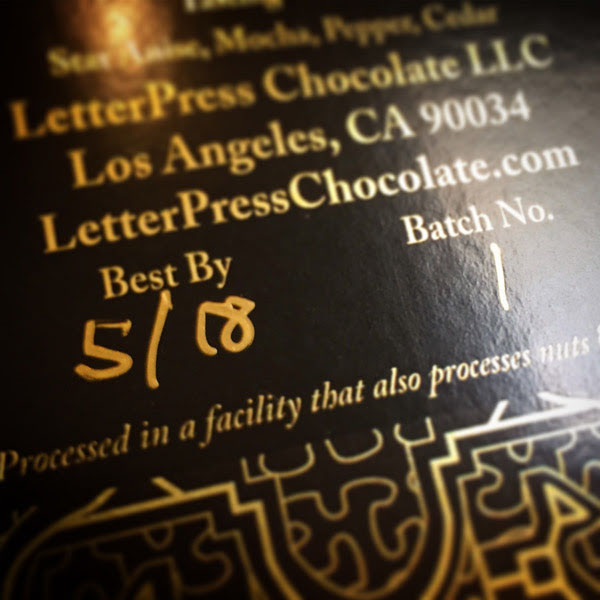

Pushing the Envelope
For the design, I started by sketching the basic pattern and scanned it, tracing my work in Adobe Illustrator to create a repeating pattern. With the unique design in place, we of course needed to print it, and I had a very clear idea in my head what I wanted. I produced renderings to send to our printer, with the idea that everything you see is gold foil – the pattern, the text, everything
After he saw these, the printer called up and said “David, there’s no way we can foil stamp this. It’s not possible. And all that tiny print…you can’t do it.” He asked me to change the design, but I said we needed to make this work. The Ucayali Bar earned this packaging, and I didn’t want to change the design.
With that mindset in place, he gave it some serious thought, and the next day he called me up with a potential solution. Much like our attempts with the Ucayali cacao, the printer had never tried this exact technique before. It required a very special type of stock (indeed, the packaging is so pristine it even uses a unique black ink that doesn’t show fingerprints), but he felt with that stock in hand, he could give it a go.
A few weeks later, we received our first test. It was very promising, but not quite there. Over the next few weeks, we went back and forth on the exact type of stock, the process, and the winning design as well.
We pulled the beans out of the oven and cracked a few open for tasting… my wife Corey looked at me and said “buy as much of this as you possibly can!”
Finally, on March 22nd 2017, we received the first bundles of our new Ucayali wrappers, and the best bar we’d ever created returned to LetterPressChocolate.com!
– David Menkes
Ucayali River Cacao
by Eric Battersby
There’s much more to this story, however, than what happened when David received the cacao. On the flip side, we briefly mentioned the beans were provided for production from Ucayali River Cacao, a cacao fermentation and drying center founded by Marcos Blitchtein, Isaac Falkon, and Robin Jordan. You’ll want to remember that last name, because he essentially is the lifeline of Ucayali cacao right now.
For being such an expert at preparing cacao beans, you’d never guess Robin’s previous background. Seriously, never. Before his chocolate endeavors, Robin actually worked in fish exports out of Seattle, exporting an extremely high grade of sushi to Japan (yes, to Japan, extremely high grade). While that of course sounds completely unrelated to cacao, a key element of his work in fish exports crossed right over to cacao, and indeed, it’s this crossover that helps make Ucayali the elite cacao you’re about to taste for the first time.
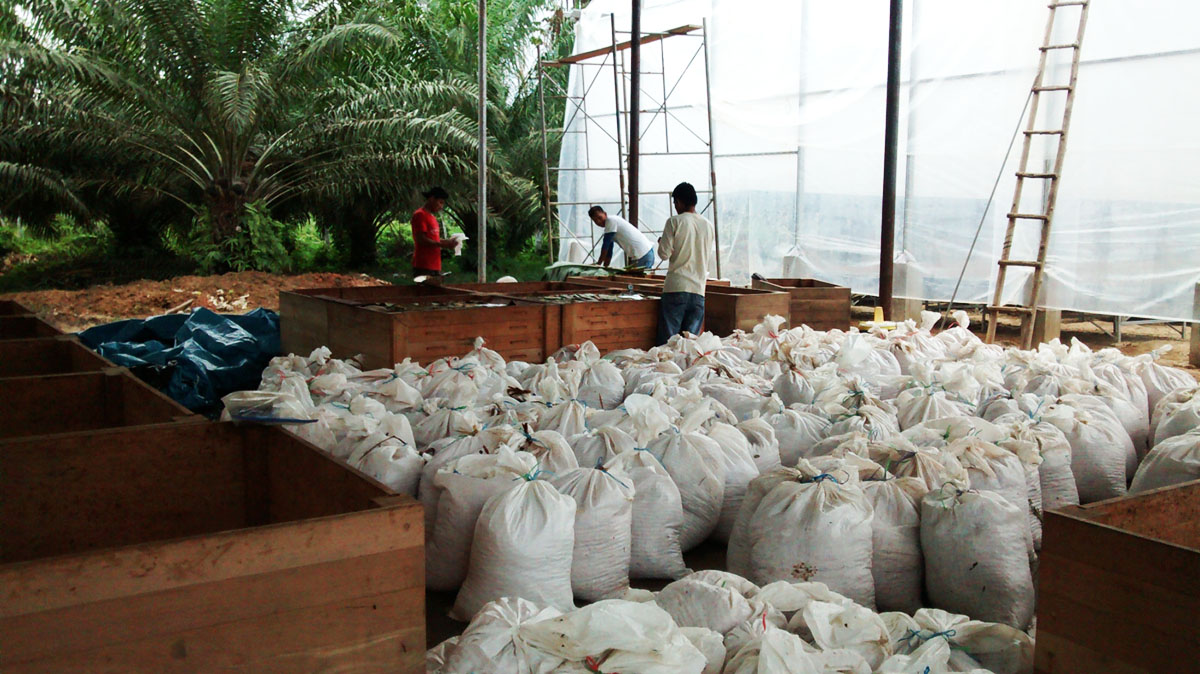
Wet Cacao Arrives at the Plant
Working in such a quality-focused export environment created an absolute obsession in Robin, an obsession to deliver the indisputably finest quality products to the marketplace. It’s an obsession that would affect any endeavor Robin found worthy to pursue, but it’s safe to say that once he shifted from sushi to cacao, the Ucayali region of Peru would never be the same.
How did he make the jump? Turns out Robin’s brother-in-law owned a farm in the region, and he felt there was something really special about what grew in that area of Peru. It piqued Robin’s interest, he visited Peru to investigate further, and now a few years later his own cacao fermentation and drying center, Ucayali River Cacao, churns out what may be the highest quality cacao on the planet.
No Fair Trade Worries Here
Sweating the small stuff makes a big difference, and Ucayali River Cacao goes above and beyond on multiple fronts. It all starts with full control over fermentation. Farmers normally make more money by selling their beans fermented; otherwise, they’re shipping beans out in the mucilaginous state, where the weight of the product is a good 70% more than shipping the beans already fermented and dried.

Loading Fermentation Boxes at Ucayali River Cacao
More than that, however, this model actually benefits the farmers, and their cacao, long-term. Ucayali River works with nearly four hundred small farmers, many located within just a thirty-minute drive from their processing facility. When farmers do their own ferment they must stop all work in the fields every time it rains (which is often), to cover all the drying cacao. They also stop field work each day to turn the cacao.
Finally, they must also deliver their dried cacao to a buyer, one who will likely try to cheat them on weight and/or price. In contrast, Ucayali River picks up the wet cacao at collection stations every 15 days, saving time for the cacao farmer at yet another point in the process.
From a cost and convenience standpoint, that looks like a win-win for both farmer and chocolate maker, to have the post harvest work completed all at once and then sent off to whomever uses the cacao in an end product. In truth, however, a place like Ucayali River Cacao makes its mark because it’s the best of the best at fermenting and drying beans.
Robin’s determination, going the extra mile to gain total control over the fermentation and drying processes, makes all the difference in final quality. It also creates a premium-priced bar, because he pays the farmers well for the wet beans. It’s an extra hassle to ship beans still in that state, so Ucayali River pays farmers the dry beans price for the wet beans weight — that’s a seriously premium price for wet beans.
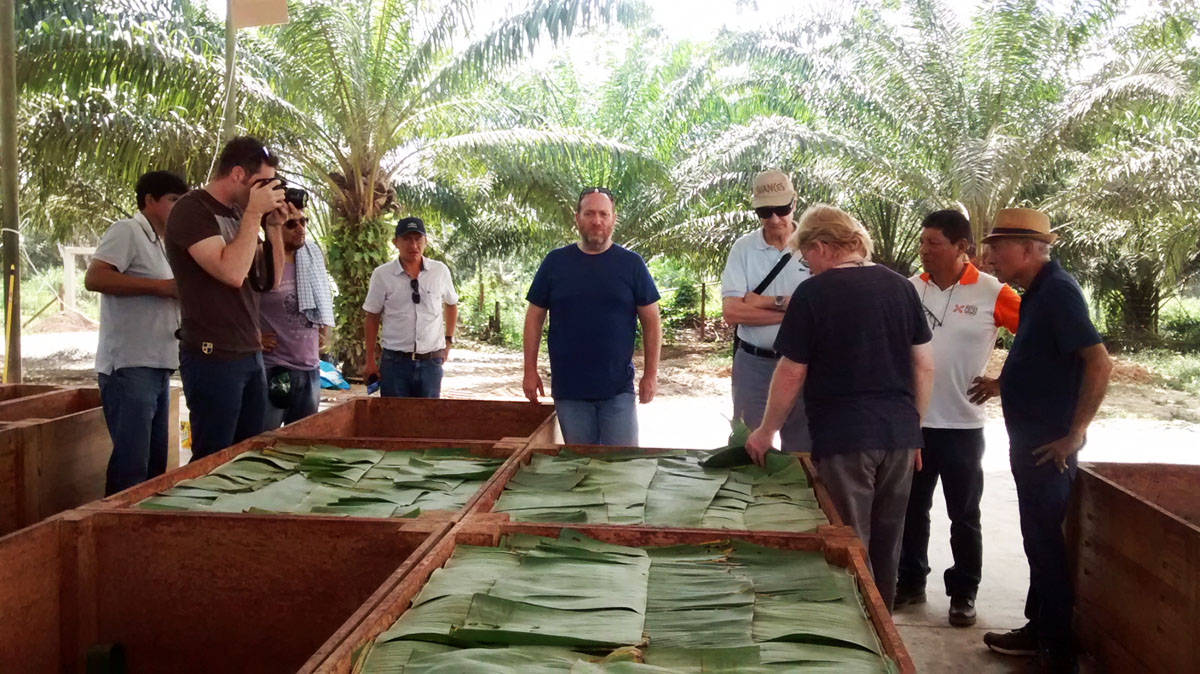
Cacao in Mid Ferment
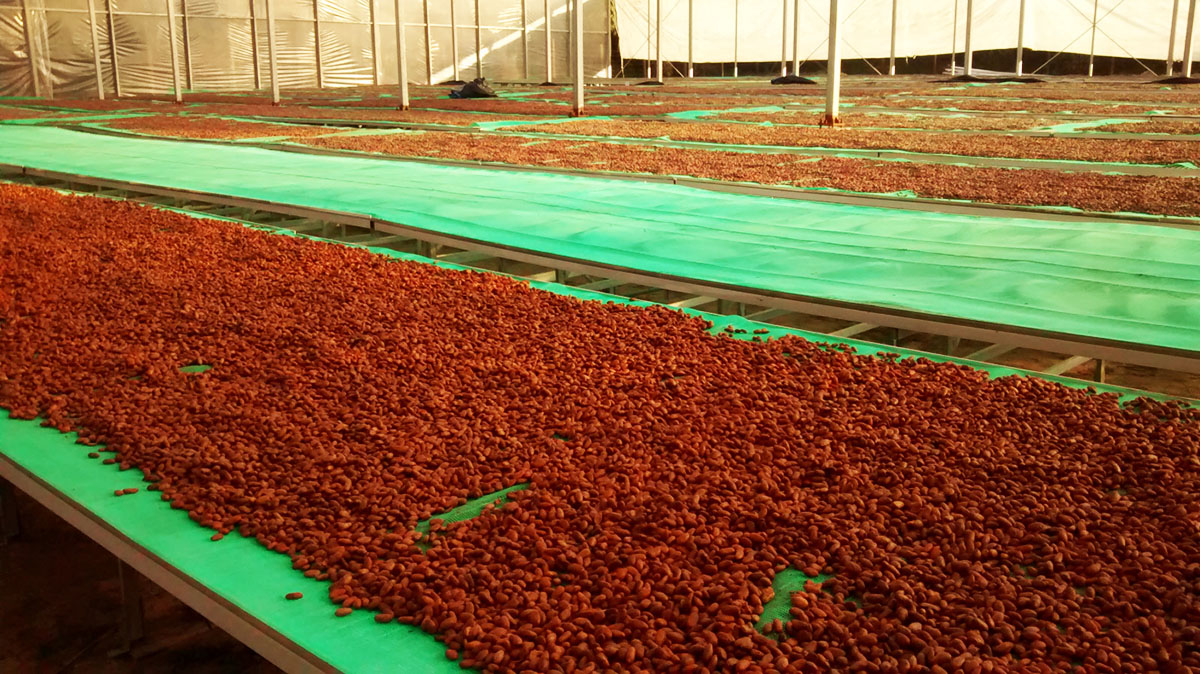
Drying Racks
With Robin’s model, instead of spending time on post harvest work and delivery, farmers can focus on taking better care of their crop and improving yields, the two factors most likely to increase their income.
The Ucayali Difference
The new supply chain model makes a huge difference all the way around, but once the beans are in house, the magic really begins. Ucayali River starts sorting the beans by hand when they’re still wet, and then through a machine Robin invented that meticulously sorts the cacao to deliver uniformly-sized beans, eliminating all flat beans and beans that are too small. That may not sound like a big deal, but when the chocolate maker receives a shipment of Ucayali River’s cacao, the beans are immediately ready for roasting.
We haven’t covered this yet at Chocolate Connoisseur (it’s coming soon in a future issue), but the condition cacao beans arrive in may vary greatly, creating serious obstacles for chocolate makers. Rocks mixed in with the beans (whether accidentally or on purpose) can wreak havoc on equipment, so receiving pristine and uniformly-sized beans makes a huge difference.
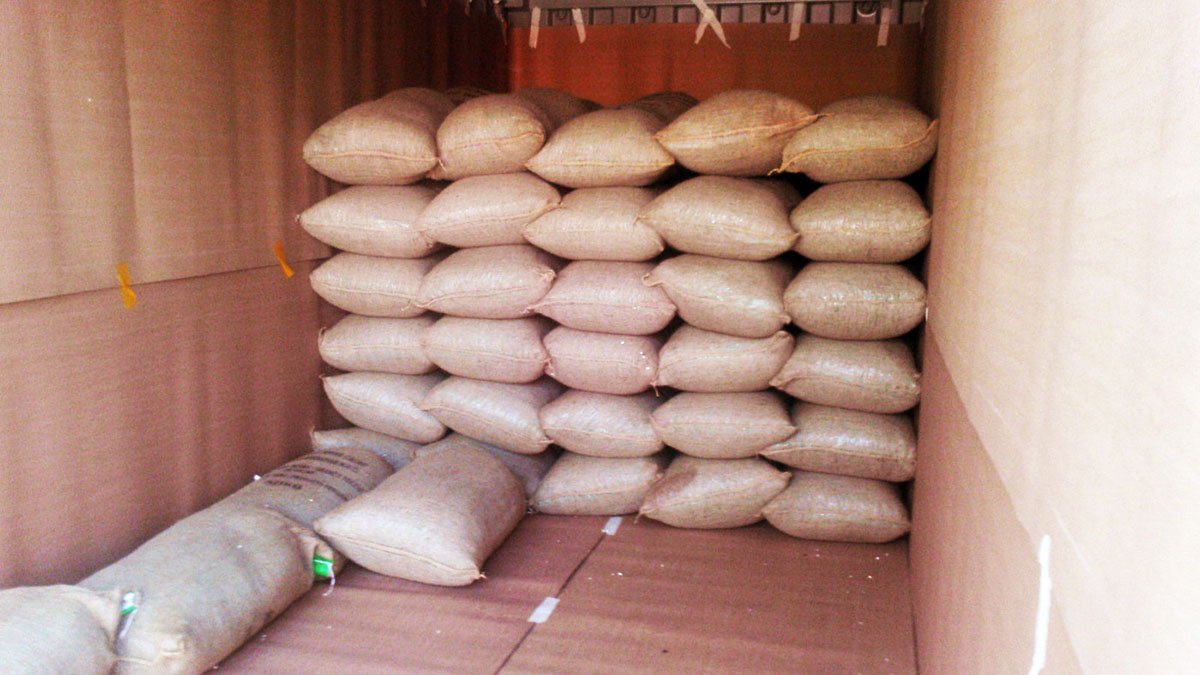
Loading a container for shipment
Finally, to wrap up Robin’s high quality obsession, all drying cacao beans at Ucayali River are turned by hand during the initial stage, not with rakes or any other equipment as you’ve seen in pictures from previous issues. It’s an unprecedented level of detail, and believe me, you will taste it in each and every LetterPress Ucayali Bar.
Make sure you check out LetterPress’ Chocolate Offer this issue to order your very own Ucayali bar, and enjoy the upgraded subsrciber’s-only discount of 25% off your order as well. You’ll likely never find a LetterPress Ucayali chocolate bar at such a great price ever again.
We hope you absolutely adore this bar as much as we do, but please let us (and David and Corey) know in the comments below!


